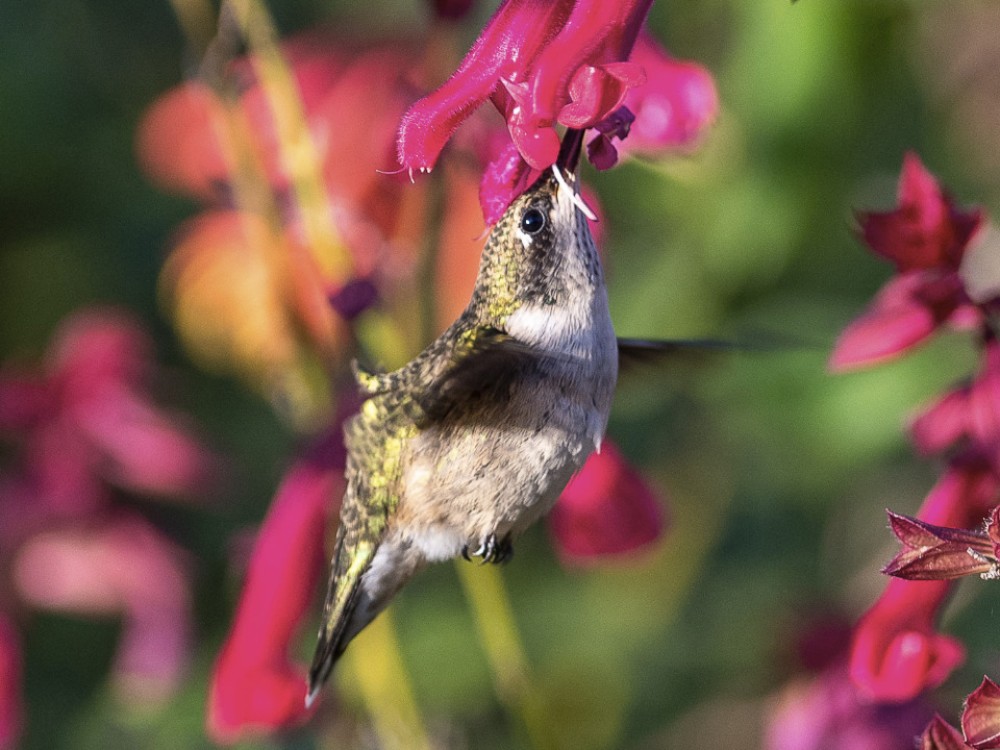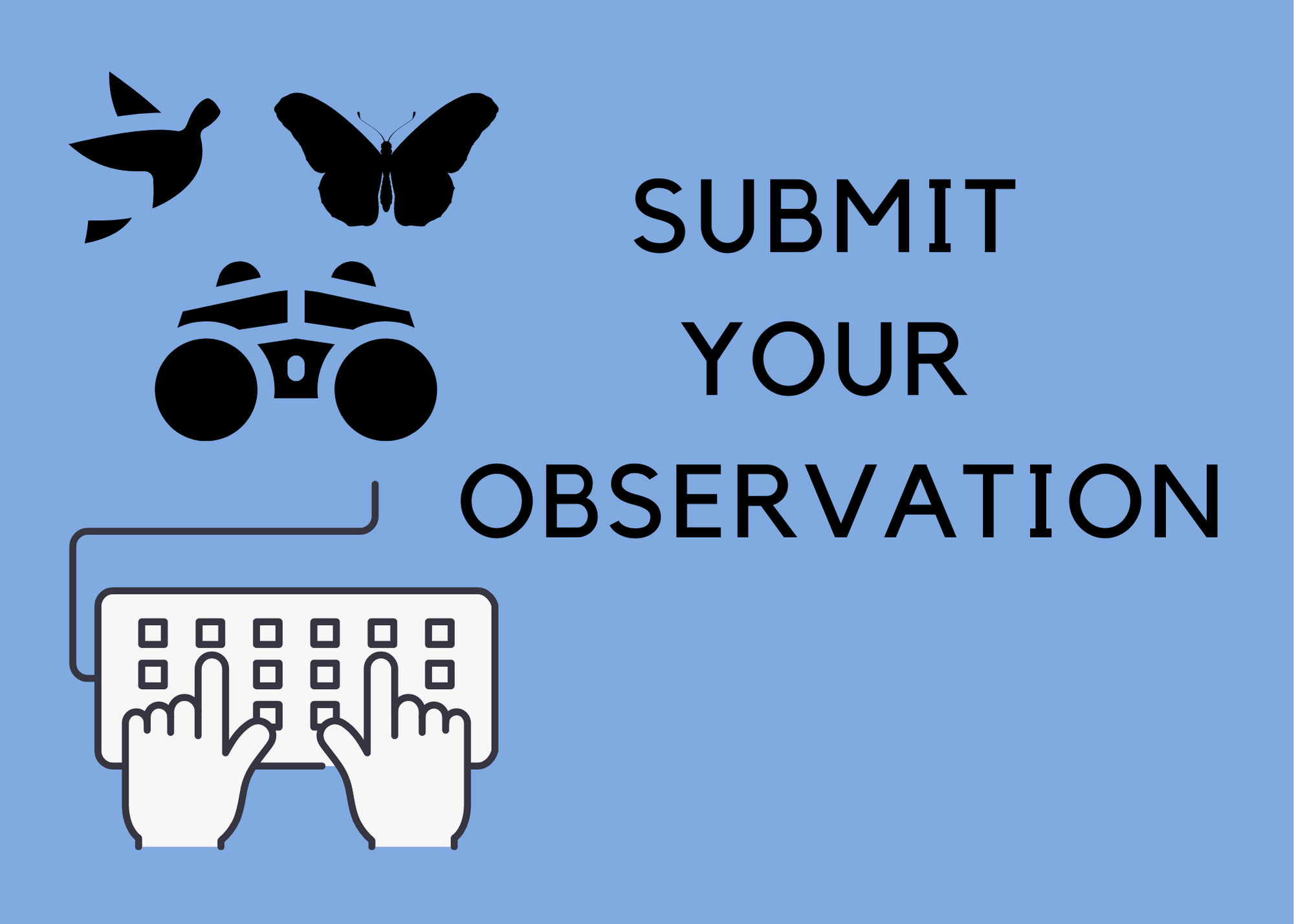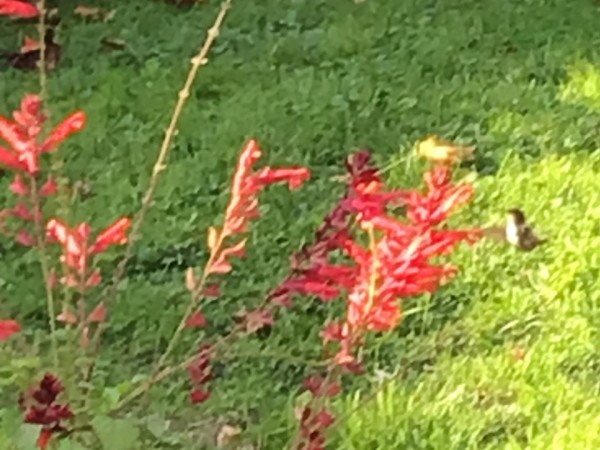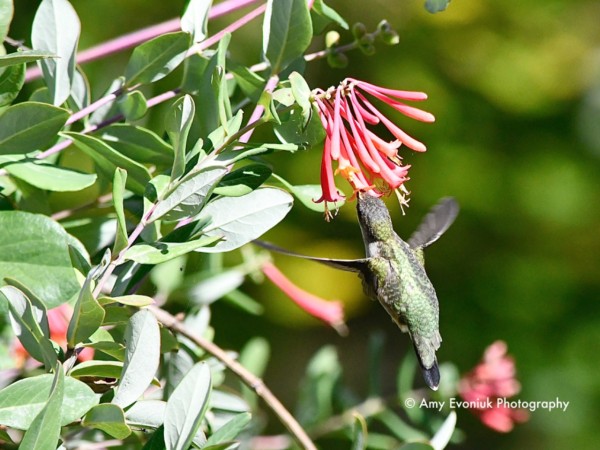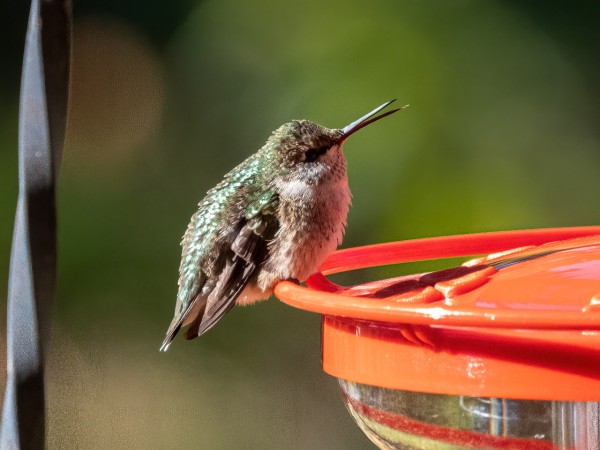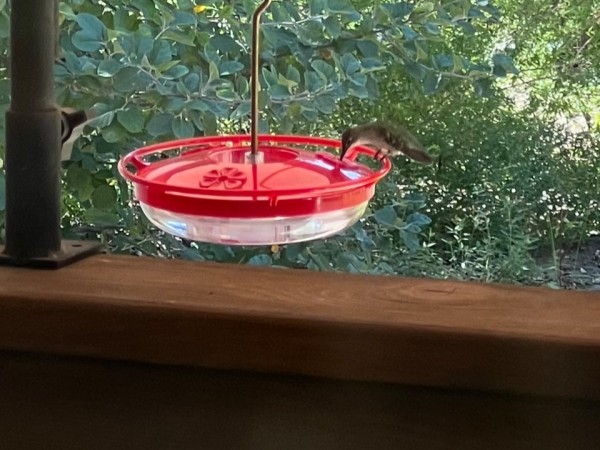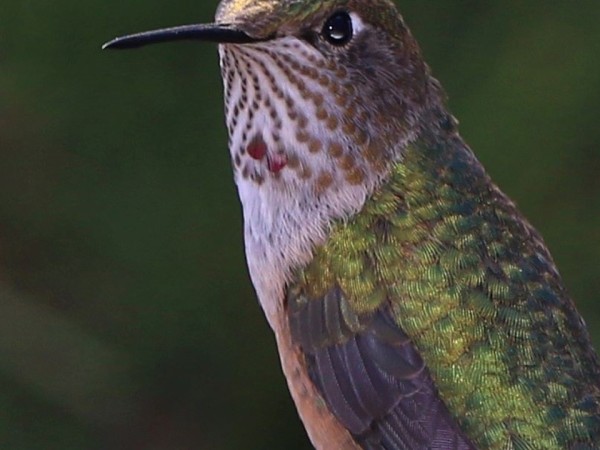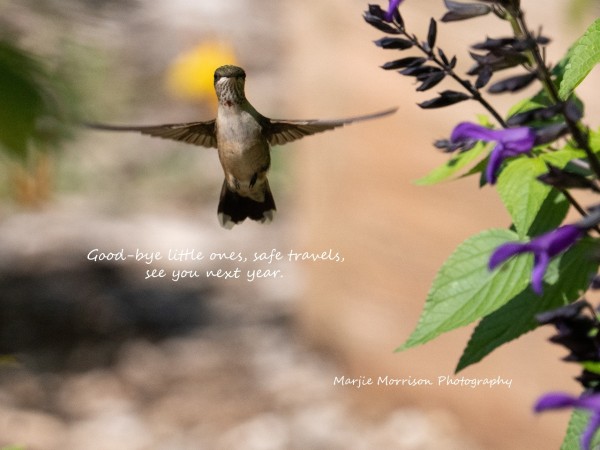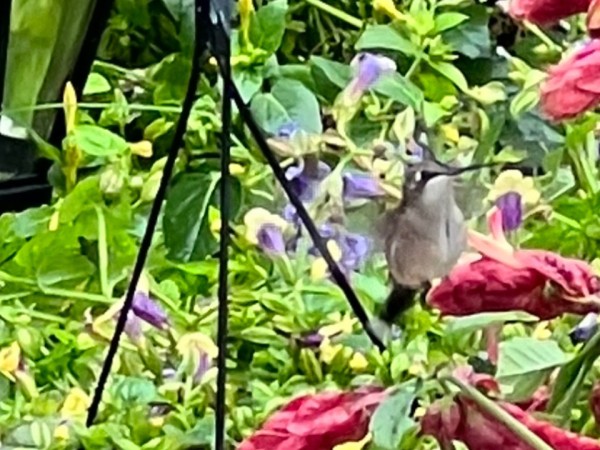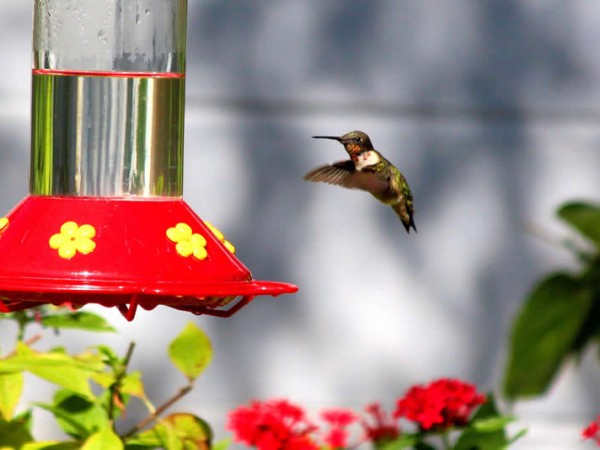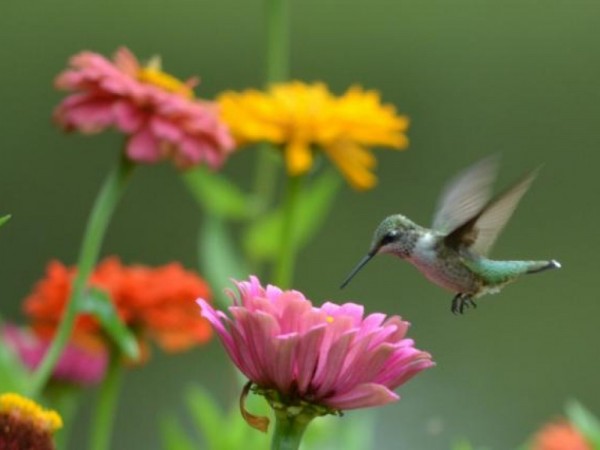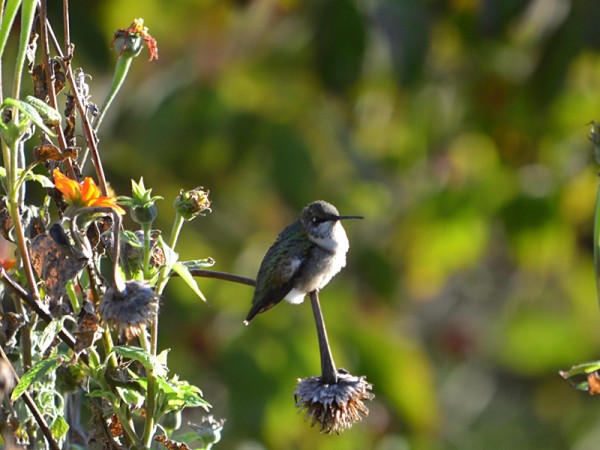Pushing Southward
Mid-October is here, and cooling temperatures and shortening daylight length are triggering hummingbirds to head south. Keep your feeders up! Migration is still ongoing and stragglers may yet stop by.
Note: Observations highlighted in this report are from October 5–18
Stragglers in Midwest and Northeast
While hummingbird numbers are dropping in the Upper Midwest and Northeast, late travelers are still passing through. Cooling temperatures and shortening daylight should hasten these hummingbirds along their migration flyways. Explore our Hummingbird Sighting map to see how these late-season reports compare to previous years. And remember to keep feeders up for stragglers!
Pat in Endicott, NY: "Lone female at my salvia border." (10/10/2022)
Joanna in Burlington, WI: "One hummingbird has been staying around our yard. Never seen one stay this late in the year." (10/12/2022)
Amy in Newburgh, IN: "Ruby-throated hummingbird showed up today. I saw her early this morning and she was back this afternoon. I believe it’s my regular by all the build up on its beak. I keep my feeder up until December 1st. I have seen hummingbirds as late as Thanksgiving probably migrating through looking for a snack." (10/14/2022)
Bruce in Willowbrook, IL: "This is the latest I've ever seen a hummer here. It was 35 degrees when I took this picture. I hope it heads south soon. It's getting pretty cold. Leave those feeders out for stragglers." (10/15/2022)
Nina in Wanaque, NJ: "I cant believe it! We haven't seen a hummingbird since September 26th. We were going to take feeders down, but 1 hummer appeared. I love it!" (10/16/2022)
Stopovers in Texas, Good News from Florida
Texas is popular stopover site for hummingbirds as they make their way to overwintering grounds in Mexico and Central America. But even here, Journey North volunteers are noting a drop in activity.
Mary Ann in Austin, TX: "Tiny black-chinned female at my feeder. She stayed for about 10 minutes." (10/06/2022)
Karlyn in Huntsville, TX: "Very few birds now. Mostly females and juveniles. Went from 5 thirty two ounce feeders to only three and half filled. They seem to be coming in all through the day instead on early morning and late afternoon. You can tell the are moving on now. Just stopping for a rest. Travel safe my little buddies. I’ll be here when you return." (10/10/2022)
The resilience of hummingbirds never ceases to amaze. In the aftermath of Hurricane Ian, Journey North volunteers are reporting Ruby-throated Hummingbirds that have made it through the storm. Our thoughts remain with communities recovering from Ian.
Steven in Naples, FL: "The first hummingbird in my Naples Park, Naples, FL yard this season showed up the morning after hurricane Ian. Saw her darting around what was left of some red fire spike and then the feeders." (09/30/2022)
Tom in Lithia, FL: "Well my 2 rubies survived the hurricane. Not much to eat because the Firespike bushes took a beating. But I went out the next morning to survey the damage and heard the familiar chirping and buzzing around my head. Immediately put out the feeders and they've been chowing down!!" (10/15/2022)
Out West
At higher elevations in Arizona, Colorado, and New Mexico, Black-chinned and Broad-tailed Hummingbirds are still being observed. How much longer will this continue? These areas will be tough to stick around in since winter-like conditions can arrive quickly at altitude.
William in Arroyo Hondo, NM: "Single Black-chinned Hummingbird female visiting nectar feeders, 4:43 P.M...Cool and wet with nighttime low temperatures in the high 30s to low 40s F. Bird is probably a 'straggler' migrating south along the Rio Grande Flyway." (10/04/2022)
Leslie in Edgewood, NM: "Saw a Juvenile Broad-tailed feeding on a Chamisa bush in fall bloom! Of course I still have feeders up but I've never seen this before now." (10/06/2022)
Carol in Show Low, AZ: "The hummingbirds enjoyed our feeders this year. We had to put up an additional feeder for total of 6. We had black-chinned, Broad-tailed, and 2 Rufous . . . They all started leaving around the third week of September. We’re having migrant stragglers. There’s 2, then they fly and 1-2 will take their place." (10/08/2022)
MaryAnn in Colorado Springs, CO: "3 or more Broad-tailed immatures at feeders and flowers." (10/10/2022)
Saying Goodbye...For Now
Hummingbirds provide so much joy and wonder that it's bittersweet to watch them depart. But as some Journey North volunteers remind us, this departure is only temporary, and next spring will bring more moments of hummingbird magic.
Marjorie in Lowell, MI: "Bye bye little ones...We saw our last hummingbirds on Wednesday 10/5/22 - 2; Thursday 10/6/22 - 1; And none since then. We had a great hummingbird season. See you next year." (10/11/2022)
Sophie in Kernersville, NC: "Our sweet Willow departed on her very first migration yesterday morning, the 15th. She was the last resident hummingbird (juvenile female) for us this season. We did have a traveler show up late yesterday afternoon . . . Next year, we'll have even more flowers waiting for them and look forward to sharing the garden with them yet again." (10/16/2022)
Keep Reporting and Keep Feeders Up
If you’re still observing hummingbird activity, keep reporting to Journey North. And If possible, please include photos in your reports and mention the hummingbird species in the comments.
Remember to keep your feeders up at least a couple weeks after your last sighting. With fewer flowers in bloom this late in the season, stragglers need feeders as reliable sources of food. Don’t be concerned: feeders will not cause hummingbirds to stay longer than they should.

